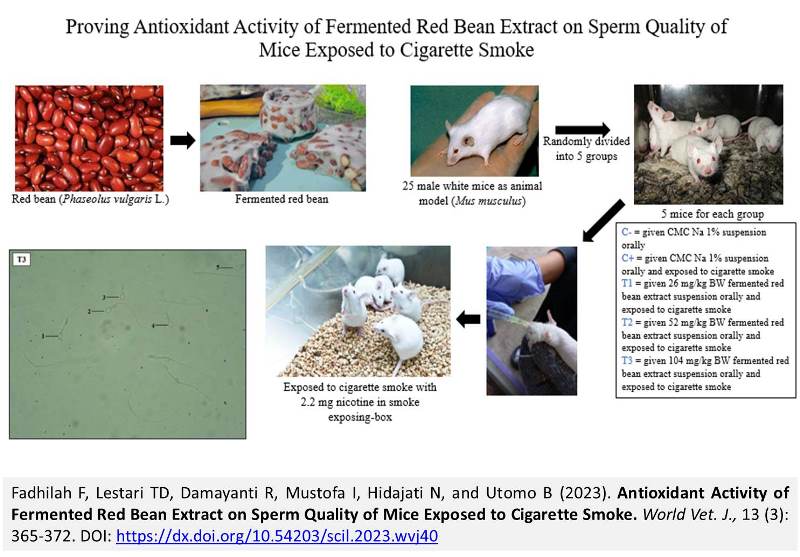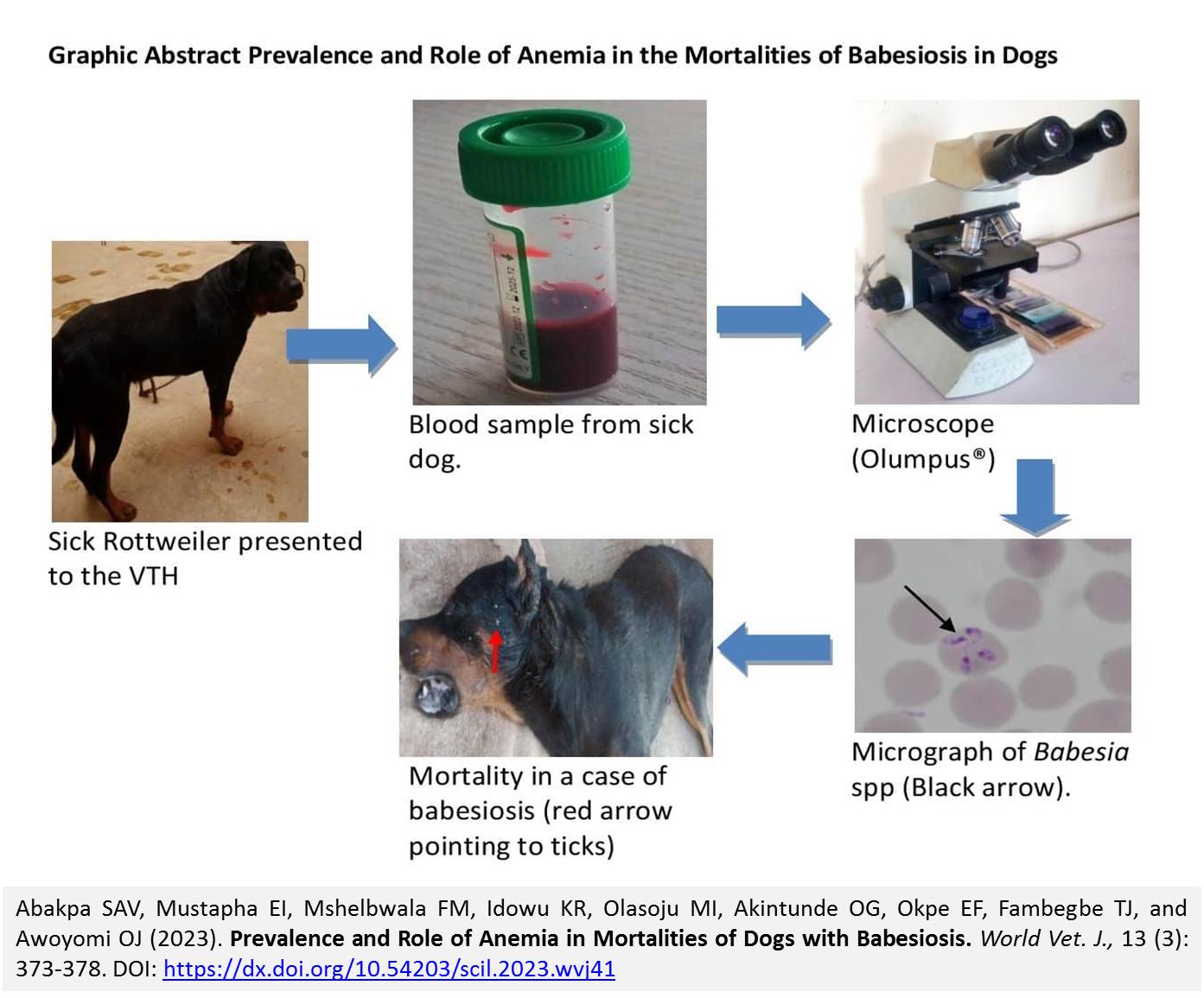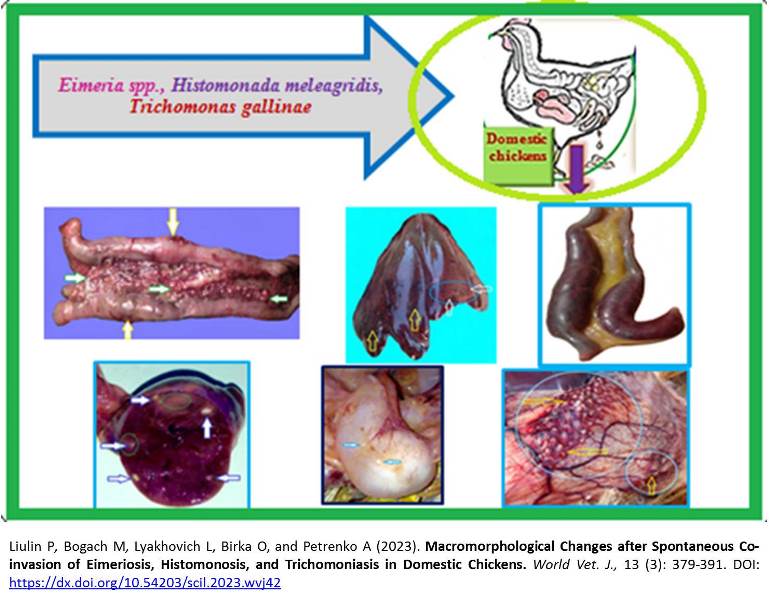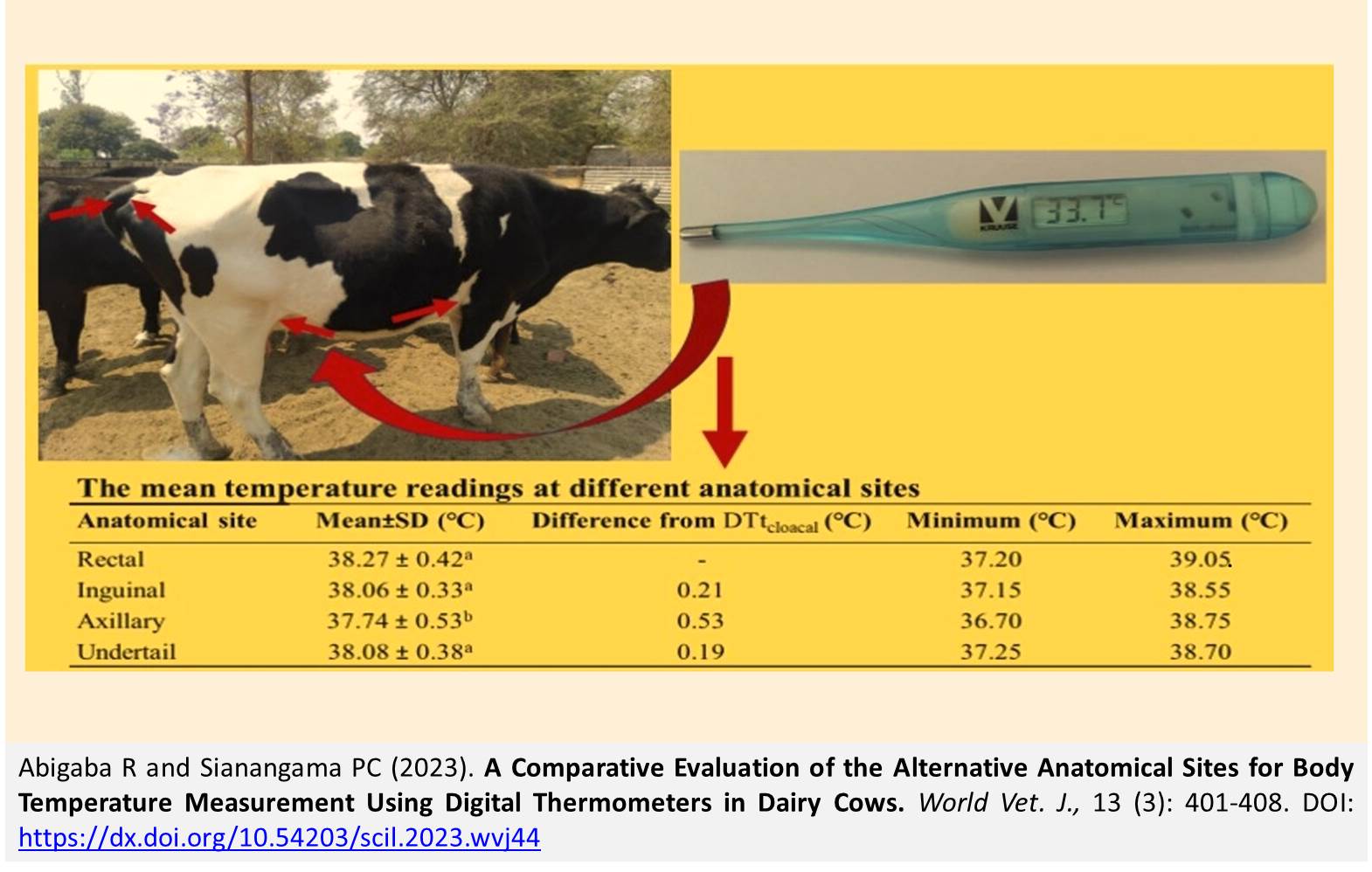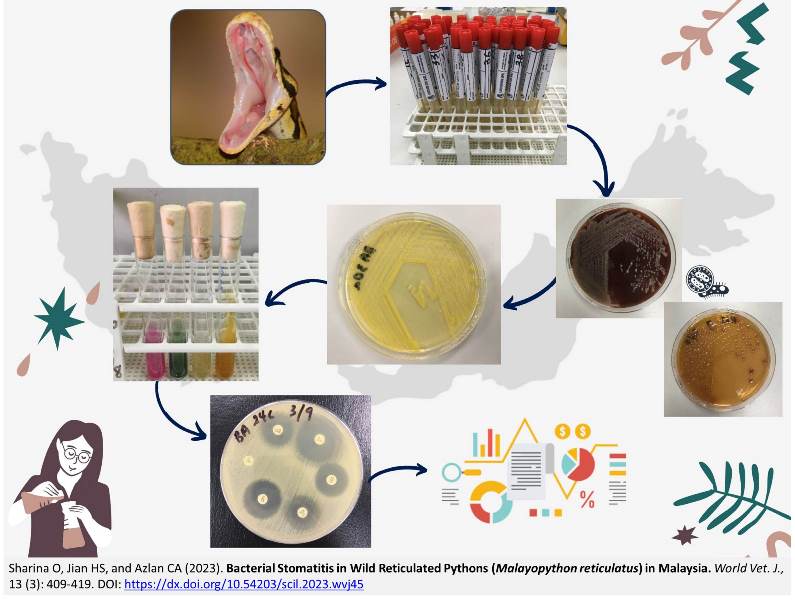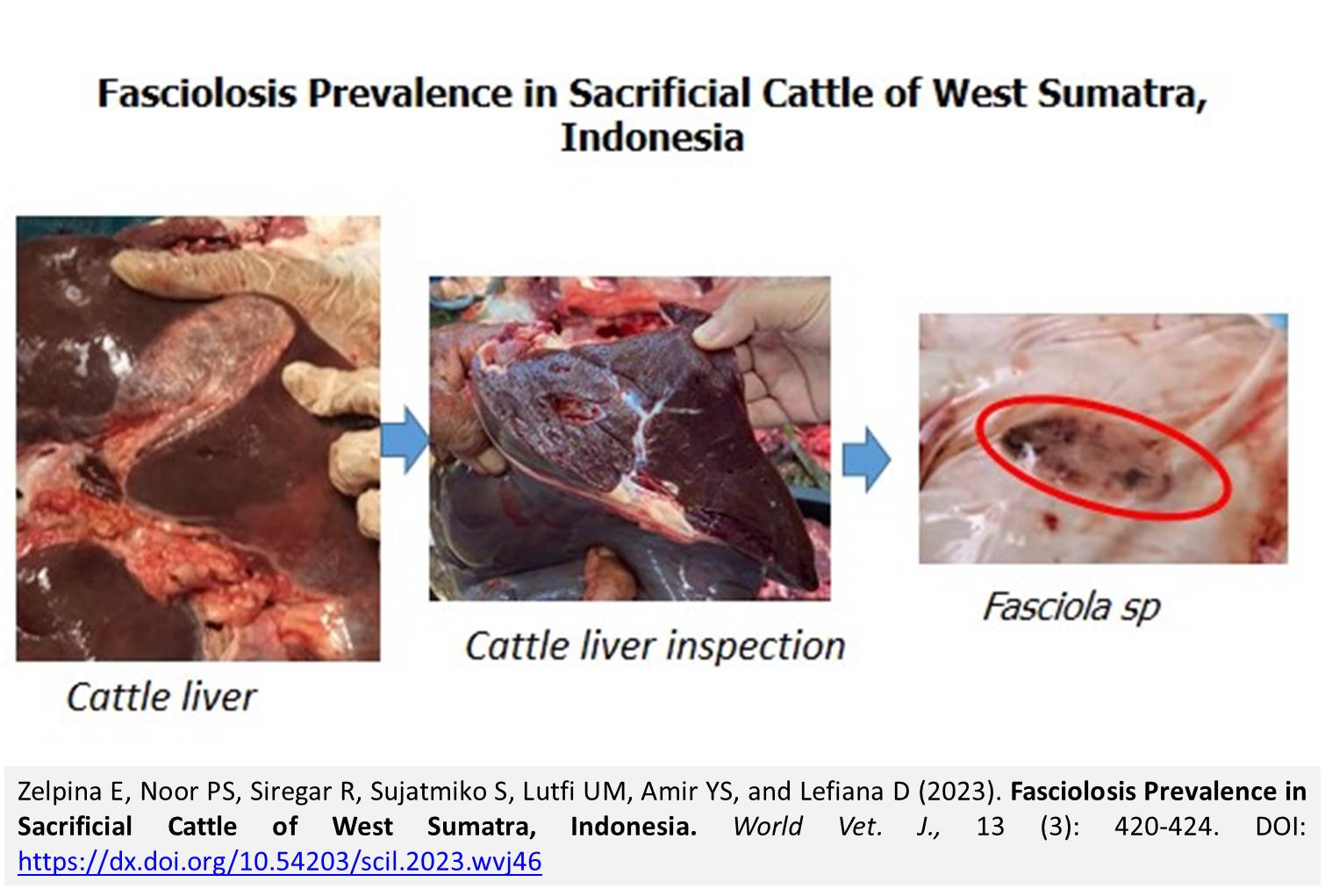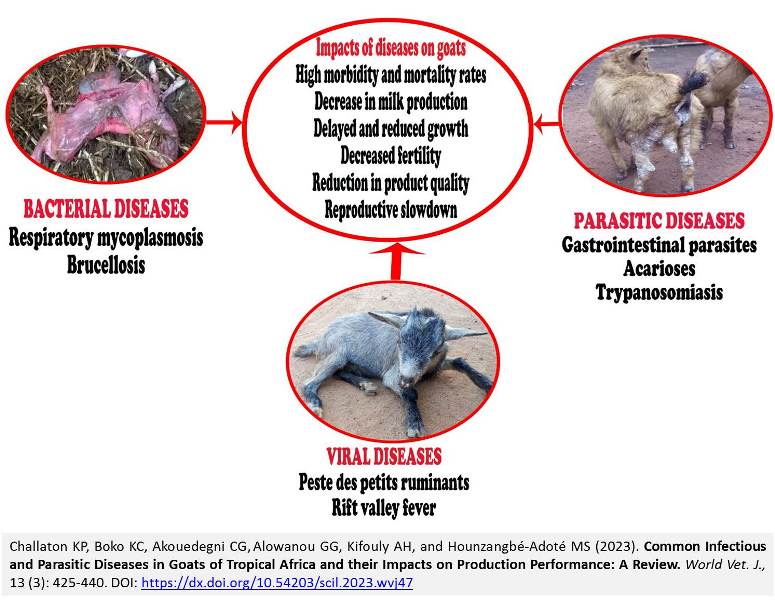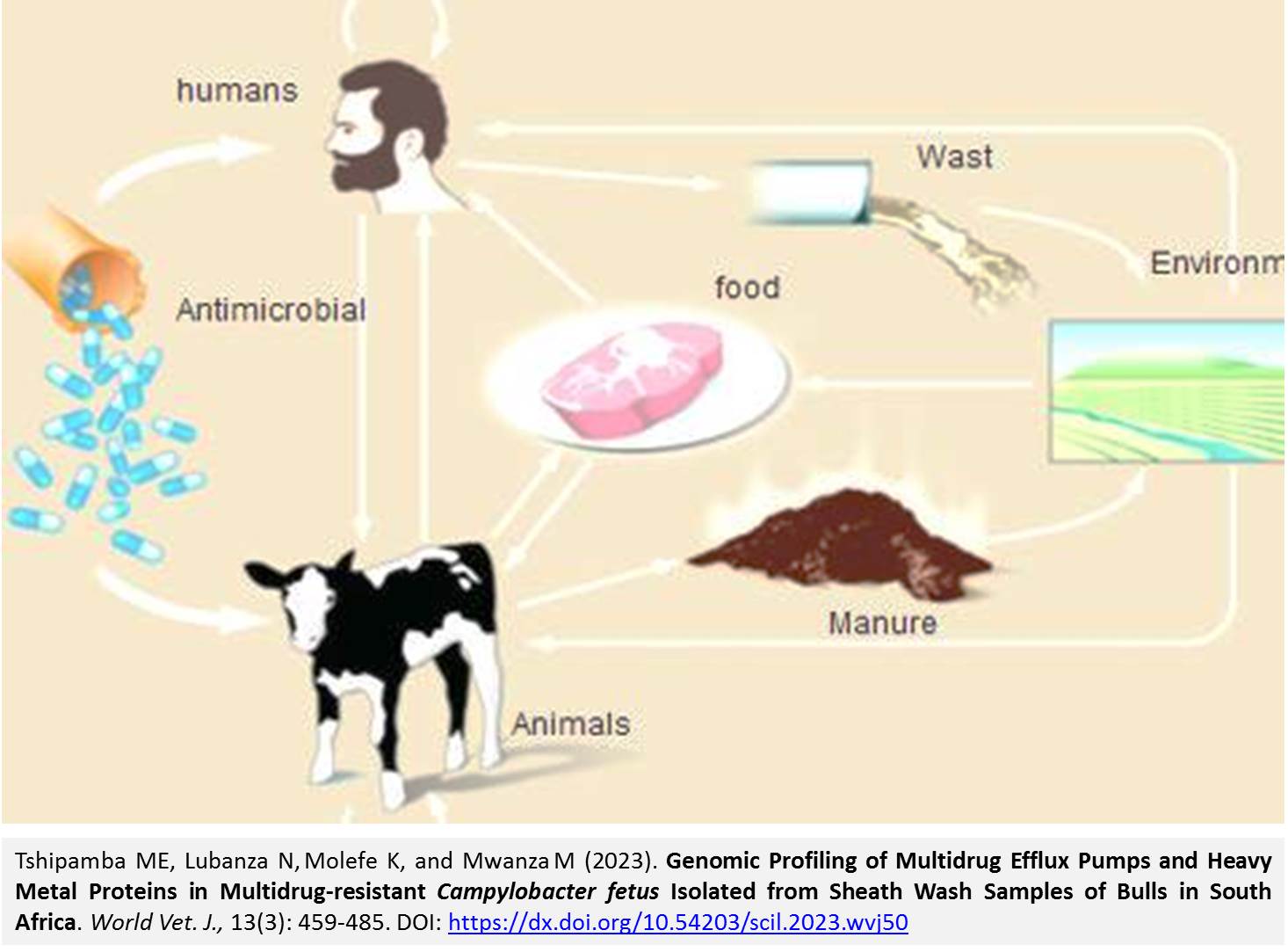Previous issue | Next issue | Archive
![]() Volume 13 (3); September 25, 2023 [Booklet] [EndNote XML for Agris]
Volume 13 (3); September 25, 2023 [Booklet] [EndNote XML for Agris]
Antioxidant Activity of Fermented Red Bean Extract on Sperm Quality of Mice Exposed to Cigarette Smoke
Fadhilah F, Lestari TD, Damayanti R, Mustofa I, Hidajati N, and Utomo B.
World Vet. J. 13(3): 365-372, 2023; pii:S232245682300040-13
DOI: https://dx.doi.org/10.54203/scil.2023.wvj40
ABSTRACT: Smoking has a negative effect on fertilization as it decreases sperm quality. The current research aimed to investigate the effect of fermented red bean (Phaseolus vulgaris L.) extract on sperm motility, viability, and plasma membrane integrity of white mice (Mus musculus) exposed to cigarette smoke. The red beans were subjected to a 36-hour fermentation process using Rhizopus spp. Then, methanol was extracted by maceration method for 24 hours until maceration was obtained. In this study, 25 male white mice aged 3 months were randomly divided into 5 groups of 5 mice. Group C (negative control) was given 0.5 mL of carboxymethyl cellulose natrium (CMC Na) 1% solution orally without unfiltered cigarette smoke exposure, and group C+ (positive control) was given 0.5 mL of CMC Na 1% solution orally and unfiltered cigarette smoke exposure. Treatment groups T1, T2, and T3 were orally given fermented red bean extract at doses of 26 mg/kg Body weight (BW), 52 mg/kg BW, and 104 mg/kg BW, respectively, and then were exposed to unfiltered cigarette smoke. For 36 days, treatment groups (except the negative control) were subjected to the inhalation of smoke from an unfiltered cigarette containing a nicotine dose of 2.2 mg. The exposure period lasted for 20 minutes each day. Each group was put into a cigarette smoke-exposing box. The sperm motility (observing the forward movement of spermatozoa), the sperm viability (examining the color of the sperm head), and the sperm plasma membrane integrity (observing the tail shape using the hypoosmotic swelling test) were then evaluated. The findings indicated significant differences in sperm motility, viability, and plasma membrane integrity of each group with positive control. A dose of 104 mg/kg BW of fermented red bean extract had the best potential to maintain sperm motility (70%), viability (82.13%), and plasma membrane integrity (61.93%) of mice exposed to unfiltered cigarette smoke.
Keywords: Plasma membrane, Red bean, Sperm motility, Sperm viability
[Full text-PDF] [Crossref Metadata] [Scopus] [Export from ePrints]
Prevalence and Role of Anemia in Mortalities of Dogs with Babesiosis
Abakpa SAV, Mustapha EI, Mshelbwala FM, Idowu KR, Olasoju MI, Akintunde OG, Okpe EF, Fambegbe TJ, and Awoyomi OJ.
World Vet. J. 13(3): 373-378, 2023; pii:S232245682300041-13
DOI: https://dx.doi.org/10.54203/scil.2023.wvj41
ABSTRACT: Anemia is a decrease in red blood cells (RBC), packed cell volume (PCV), and hemoglobin in the blood due to hemolysis, hemorrhage, or decreased production of RBC. This research determined the prevalence, characteristics, and role of anemia in association with babesiosis in dogs for one year. A total of 103 dogs positive for babesiosis presented at the Veterinary Teaching Hospital, Federal University of Agriculture, Abeokuta, Nigeria, were screened for anemia. Among these, 80 dogs displaying anemia were selected. A thin blood smear was used to identify Babesia spp. The PCV and hemoglobin concentration (Hb) were determined using an automatic hemoglobinometer (Acon Laboratories, Inc., San Diego, USA). Temperature, pulse, PCV, Hb, and RBC assessed were correlated with mortalities. The findings indicated that 32 anemic babesiosis were male. The percentage of severe anemia was higher, compared to mild or moderate anemia. The age-specific prevalence of anemia was highest among dogs above 3 years but lowest in the age range of 1-3 years. Small breeds of dogs had a higher prevalence of anemia compared with larger breeds. The mortality rate was 18 (22.5%), with severe or microcytic hypochromic anemia being the highest. The temperature and pulse rates of the dogs that died were higher than those of survivors, while the PCV, Hb, and total RBC counts were significantly lower than those of survivors. In conclusion, the prevalence of anemia in dogs with babesiosis in this study was very high. Most of the mortalities recorded in the present study can be attributed to severe anemia and microcytic hypochromic anemia, with mortality rates of 61.% and 38.9%, respectively.
Keywords: Anemia, Babesiosis, Dog, Mortality, Prevalence
[Full text-PDF] [Crossref Metadata] [Scopus] [Export from ePrints]
Macromorphological Changes after Spontaneous Co-invasion of Eimeriosis, Histomonosis, and Trichomoniasis in Domestic Chickens
Liulin P, Bogach M, Lyakhovich L, Birka O, and Petrenko A.
World Vet. J. 13(3): 379-391, 2023; pii:S232245682300042-13
DOI: https://dx.doi.org/10.54203/scil.2023.wvj42
ABSTRACT: The study of macro morphological changes is important for recognizing pathological processes and diagnosing diseases, especially co-invasions. The current study aimed to reveal macro morphological changes during spontaneous co-invasion of Eimeria spp., Histomonas meleagridis, and Trichomonas gallinae in adult chickens. The methods of evisceration and parasitological studies of the carcasses of adult domestic chickens (n = 31) aged 1.5-2.3 years, and (n = 8) are the control group, died of a natural death from farms in the Kharkiv region of Ukraine revealed the peculiarities of manifestations of macro morphological changes in organs, which were characterized by manifestations of pathologies in 100% of cases in dead chickens by changes in the intestines and liver, in 48.39% in the spleen, in 16.13% in the bursa of Fabricius, in 16.13% in the peritoneum and 9.68% in skin. In particular, a mucosal-hemorrhagic inflammatory process was observed in the intestines of chickens with damage to both thin and thick parts (duodeno-jejuno-ileo-typho-cloacitis). This inflammatory process was observed in combination with necrotic-granulomatous lesions on the intestinal wall. A combined lesion of the liver was detected - hepatomegaly on the background of steatosis, multifocal necrosis, and granulomas (shiny, vitreous, with a white center) in the presence of Histomonas meleagridis and Trichomonas gallinae. A granulomatous splenitis was diagnosed in the spleen of chickens. Necrotic-granulomatous lesions leading to cyst formation were identified in the bursa of Fabricius. Additionally, granulomatous lesions originating from trichomoniasis were observed on the peritoneum and skin. These findings highlight the systemic nature of pathological-anatomical changes resulting from the co-infection of eimeriosis, histomoniasis, and trichomoniasis in domestic chickens. This systemic manifestation signifies the occurrence of multi-organ failure and holds valuable diagnostic implications.
Keywords: Comorbidity, Eimeriosis, Enterohepatitis, Histomonosis, Pathological changes, Trichomoniasis
[Full text-PDF] [Crossref Metadata] [Scopus] [Export from ePrints]
In Silico and In Vivo Potential of Fraction Red Betel Leaf as an Immunostimulant Agent in White-leg Shrimp
Saputra A, Maftuch, Andayani S, and Yanuhar U.
World Vet. J. 13(3): 392-400, 2023; pii:S232245682300043-13
DOI: https://dx.doi.org/10.54203/scil.2023.wvj43
ABSTRACT: Production of white-leg shrimp (Litopenaeus vannamei) in aquaculture with advanced technology ultimately results in high mortality rates in cultivation. Infectious diseases, including Vibrio spp., can cause mortality with necrosis symptoms in the white-leg shrimp hepatopancreas. Disease prevention through enhancing immunity is highly effective in controlling diseases in shrimps. The current study aimed to obtain information on the compounds present in the fraction of Piper (P.) crocatum as an immunostimulant agent used in silico. The current study investigated the absorption, distribution, metabolism, excretion, and toxicity (ADME/T), and determined the optimal fraction dosage of P. crocatum when injected as an immunostimulant substance. In this study, in silico analysis was conducted by accessing several servers, while the shrimp’s immune response was evaluated using a completely randomized design experiment with four treatments (10 individuals/container) and three replications, including 0 (control), 0.5 µg/g, 1 µg/g, and 1.5 µg/g. The shrimp’s immunity was examined by injecting the P. crocatum fraction initially, followed by a second injection 24 hours later. Shrimp hemolymph was collected before the injection of the P. crocatum fraction and 24 hours after the injection. Hemolymph was collected at both time intervals to assess total hemocyte count (THC), differential hemocyte count (DHC), and phenoloxidase (PO) as the immune response of shrimp before and after administration of P. crocatum fraction. Two compounds were confirmed immunostimulant agents in a fraction of P. crocatum, 2-Amino-1,3,4-octadecanetriol, and erucamide. The immune response values for THC (14.17 ± 2.45 × 106 cells mL-1), DHC hyaline (53 ± 4.5%), semi-granular cells (52 ± 4.0%), and granular cells (43 ± 40%), and PO (0.112 ± 0.016 units/λ=490) at a concentration of 1.5 µg/g showed a significant increase in number and percentage compared to the control. These results indicate the presence of two compounds in fraction one P. crocatum, as candidates for immunostimulant agents. Administration of 1.5 µg/g of a fraction of P. crocatum is the appropriate dose as an immunostimulant agent when administered via injection method for white-leg shrimp.
Keywords: Immunostimulant, In silico, Litopenaeus vannamei, Piper crocatum
[Full text-PDF] [Crossref Metadata] [Scopus] [Export from ePrints]
A Comparative Evaluation of the Alternative Anatomical Sites for Body Temperature Measurement Using Digital Thermometers in Dairy Cows
Abigaba R and Sianangama PC.
World Vet. J. 13(3): 401-408, 2023; pii:S232245682300044-13
DOI: https://dx.doi.org/10.54203/scil.2023.wvj44
ABSTRACT: The measurement of body temperature is a critical aspect of assessing the health and reproductive status of dairy cows. The standard method used to estimate this temperature is rectal thermometry. However, this technique has limitations, including disease spread, distress, and or risks of rectal injuries. The current study was undertaken to validate the potential of alternative anatomical sites for temperature measurement using a digital thermometer (DT). The study employed a one-factor experimental design considering the anatomical site as the main factor, with four treatments or factor levels, namely rectal (DTtrectal), inguinal (DTtinguinal), axillary (DTtaxillary), and undertail (DTtundertail) sites. A simple random sampling technique was employed to determine the order of site selection for temperature measurement. In total, 26 adult Holstein Friesian-Boran cows with an average weight of 482 kg were used to conduct this study. Each cow was assessed for all the treatments considered in this study. The temperature measured at different anatomical sites was evaluated. The highest mean temperature was observed for rectal temperature (38.27 ± 0.42℃), while that of mean axillary temperature was the lowest (37.75 ± 0.53℃). The mean temperature readings were significantly affected by the anatomical site. There was no significant difference between mean rectal and inguinal or undertail temperature. There was a significant correlation between the rectal and undertail temperature, while no significant correlation was observed between rectal and inguinal temperature. The equivalence analysis between the rectal and undertail pair revealed a significant bias. This bias suggests that the two anatomical sites cannot be used interchangeably, particularly with digital thermometer application in Holstein Friesian-Boran cows. However, the observed mean undertail temperature and its correlation with rectal temperature indicated that the undertail site still holds promise as an alternative site for temperature-taking under conditions different from this study.
Keywords: Anatomical site, Dairy cow, Digital thermometer, Temperature
[Full text-PDF] [Crossref Metadata] [Scopus] [Export from ePrints]
Bacterial Stomatitis in Wild Reticulated Pythons (Malayopython reticulatus) in Malaysia
Sharina O, Jian HS, and Azlan CA.
World Vet. J. 13(3): 409-419, 2023; pii:S232245682300045-13
DOI: https://dx.doi.org/10.54203/scil.2023.wvj45
ABSTRACT: Bacterial stomatitis is a common clinical form of upper alimentary tract disease in reptiles. The current study aimed to isolate and identify the common aerobes in the oral cavities of wild reticulated pythons and to profile their antimicrobial susceptibility. The need to conduct the current research was deemed in parallel with the increasing demand for snakes as pets and the growing emergence of multiple-drug-resistant organisms. A total of 40 fresh carcasses of the wild-caught reticulated pythons were assessed for the presence or absence of stomatitis. Oral swabs were obtained and cultured on blood and MacConkey agar media. The colony and cellular morphologies of the isolates were evaluated, followed by Gram-positive and Gram-negative bacterial identification. Antimicrobial susceptibility testing was performed using Kirby-Bauer disk diffusion method against selected antibiotics, namely gentamicin (GEN), amoxicillin (AMX), cephalexin (LEX), azithromycin (AZM), tetracycline (TET), and ciprofloxacin (CIP), commonly used to treat bacterial infection in reptiles. Results indicated that the prevalence of stomatitis was 77.5%. Among 153 isolates identified, 76.47% of bacteria were identified from pythons with stomatitis lesions, while 23.53% of bacteria were identified from pythons without stomatitis. Of 153 isolates, Gram-negative bacteria were shown to be predominant (94.77%). The three most isolated bacterial species were Aeromonas spp. (14.38%), Klebsiella pneumoniae (11.76%), and Alcaligenes faecalis (8.5%). Meanwhile, coagulase-negative Staphylococcus spp. (4.58%) and Corynebacterium spp. (0.66%) were the only isolated Gram-positive aerobes. Most isolates were observed to be equally susceptible to GEN and CIP (at 95.8%) but highly resistant to AMX (83.3%) and LEX (75.0%). In conclusion, bacterial stomatitis in wild-caught reticulated pythons was highly prevalent and often seen as a mixed bacterial infection (96.8%). The isolated bacteria consistently show susceptibility towards GEN and CIP and thus could be considered the primary line of antibiotics in treating this disease.
Keywords: Antimicrobial susceptibility, Bacteria, Malaysia, Reticulated python, Stomatitis
[Full text-PDF] [Crossref Metadata] [Scopus] [Export from ePrints]
Fasciolosis Prevalence in Sacrificial Cattle of West Sumatra, Indonesia
Zelpina E, Noor PS, Siregar R, Sujatmiko S, Lutfi UM, Amir YS, and Lefiana D.
World Vet. J. 13(3): 420-424, 2023; pii:S232245682300046-13
DOI: https://dx.doi.org/10.54203/scil.2023.wvj46
ABSTRACT: Fasciola is a species of the trematode genus that can cause devastating parasitic disease, namely fasciolosis. Fasciola spp. infestation can affect ruminants, such as cows, buffaloes, goats, and sheep, resulting in economic losses to livestock owners. Ruminants are the definitive host for the Fasiola species. This cross-sectional research was conducted on Eid al-Adha/Qurban in July 2022 to determine the prevalence of fasciolosis in sacrificial cattle in Fifty Cities District, West Sumatra, Indonesia. A total of 106 samples of sacrificial cattle liver from the abattoir were investigated. Examination of the liver for the presence of Fasciola spp. was carried out by postmortem examination by removing the liver from the abdominal cavity immediately after slaughter. The livers of all sacrificial cattle were examined by systematic inspection, palpation, and incision for Fasciola spp. infestation. Necropsy results of samples indicated the prevalence of Fasciola spp. (36.79%), which was higher in female animals, compared to males. Based on age, the highest prevalence was at the age of > 4 years, (52.95%), followed by 2 years (39.62%) and 3 years (25.00%). Regarding the cattle breed, the highest prevalences were indicated in Pesisir cattle (47.61%), Simmental cattle (44.44%), Bali cattle (37.28%), Ongole cattle (20%), and Limousine cattle (14.28%). This study revealed that fasciolosis in sacrificial animals in Fifty Cities, West Sumatra, was influenced by gender. Therefore, the findings of this study suggest improving treatment protocol for the prevention of fasciolosis in sacrificial animals.
Keywords: Faciola, Liver, Prevalence, Sarficial cattle
[Full text-PDF] [Crossref Metadata] [Scopus] [Export from ePrints]
Common Infectious and Parasitic Diseases in Goats of Tropical Africa and their Impacts on Production Performance: A Review
Challaton KP, Boko KC, Akouedegni CG, Alowanou GG, Kifouly AH, and Hounzangbé-Adoté MS.
World Vet. J. 13(3): 425-440, 2023; pii:S232245682300047-13
DOI: https://dx.doi.org/10.54203/scil.2023.wvj47
ABSTRACT: Available scientific studies on goat diseases in tropical Africa are limited to specific regions or specific diseases. This study aimed to review scientific research findings on goat diseases in tropical Africa, focusing on their prevalence and impacts on production performance. All main diseases, such as parasitic, viral, and bacterial diseases, are included in the present study. Studies conducted in different countries have revealed high prevalence rates of gastrointestinal parasites exceeding 95%. These parasites resulted in growth retardation and reduced carcass weight at slaughter. Management of mites could decrease production and reproductive function. Trypanosomiasis led to decreased hematocrit levels, abortions, low birth weight, and high kid mortality. The prevalence of trypanosomiasis has been different across regions, ranging from 2.95% to 57.1%. Peste des Petits Ruminants has been reported in many African countries, causing significant outbreaks with seroprevalence rates ranging from 30% to 55%. Rift Valley fever was characterized by high mortality in adult goats (20-30%) and numerous abortions 2 weeks after infection, with seroprevalence rates ranging up to 25.8%. Contagious Caprine Pleuropneumonia indicated high morbidity (approximately 100%) and high mortality (80% to 100%), with prevalence ranging from 22% to 39% in abattoirs and from 35% to 52% in farms. Brucellosis did not affect the weight of infected animals but reduced litter size in goats and disrupts vital organs. This review highlights the extent of goat diseases in tropical Africa to determine the most appropriate prevention and control strategies.
Keywords: Control strategy, Goat diseases, Prevalence, Production performance, Tropical Africa
[Full text-PDF] [Crossref Metadata] [Scopus] [Export from ePrints]
Potential Benefits of Propolis in Large and Small Animal Practices: A Narrative Review of the Literature
Abu-Seida AM.
World Vet. J. 13(3): 441-451, 2023; pii:S232245682300048-13
DOI: https://dx.doi.org/10.54203/scil.2023.wvj48
ABSTRACT: Propolis is a resinous substance from a mixture of different plant parts and molecules bees compose. This narrative review article explored the application of propolis in large and small animal practices in PubMed, Scopus, and Google Scholar databases. Propolis is applied in different pharmaceutical forms. Due to its numerous biological actions, such as antimicrobial, anti-inflammatory, antioxidant, antiparasitic, antiulcer, antitumor, and immunomodulatory, propolis can improve animal health and production. Propolis could be used as an alternative treatment for many diseases, such as mastitis, lumpy skin disease, foot and mouth disease, reproductive disorders, and diarrhea in cattle. Moreover, it could improve weight gain in cattle. In equine, propolis has been used as a local anesthetic and for treating dermatomycosis, chronic bronchitis, and skin wounds. In pigs, propolis has been used to treat enzootic pneumonia and as a prophylaxis for gastrointestinal and respiratory diseases in weak pigs. Propolis has been applied to treat caseous lymphadenitis and parasitic diseases in sheep and goats. Furthermore, it improves the immune status of kids and the health status of late pregnant ewes. In dogs and cats, propolis has been applied to treat otitis externa, eye diseases, Cushing’s syndrome, and dermatophytosis. In dogs, propolis can treat transmissible venereal tumors. Moreover, propolis positively affects animal production, average daily gain and milk yield in sheep, growth of calves, lambs, and piglets, and cow’s milk nutritional quality. On the other hand, the addition of propolis to the diet of feedlot bulls and pigs has no effect on their feed intake, hematological, biochemical, and immunological parameters, nutrient digestibility, microbial synthesis, and carcass characteristics. Based on the available clinical studies, propolis has potential benefits for animal health in cattle, equine, sheep, goats, pigs, dogs, and cats. According to the available literature, propolis is a natural promising agent that can alternate conventional pharmaceuticals, particularly antibiotics. It improves animal health and production with no adverse effects and low cost. Most conducted studies on the efficacy of propolis on animal health and production are in vitro. Due to its scarcity, further controlled clinical trials are recommended to evaluate the exact usefulness of propolis in veterinary medicine and to obtain reliable conclusions on the benefits of propolis in animal health and production.
Keywords: Cattle, Dog, Horse, Pig, Propolis, Sheep
[Full text-PDF] [Crossref Metadata] [Scopus] [Export from ePrints]
The Role of Veterinarians in Forensic Science: A Review
|
|
Kulnides N, and Lorsirigool A.
World Vet. J. 13(3): 452-458, 2023; pii:S232245682300049-13
DOI: https://dx.doi.org/10.54203/scil.2023.wvj49
ABSTRACT: Forensic science plays an important role in solving lawsuits involving human beings, such as assault, homicide, or poisoning cases. It combines scientific principles and techniques with legal procedures. Regarding past and present animal cruelty issues, many countries have passed stringent legislation to penalize individuals who abuse animals. Such animal cruelty protection acts are practiced in many countries, including Thailand, the United States, and Australia. Therefore, forensic science has been applied in the veterinary field, classified as a branch called veterinary forensic science. This field of study examines abnormalities in unnatural death in animals, collecting evidence from animals according to the chain of custody (crucial for documenting evidence) and the laws related to crimes against animals. This article gathers information by searching international databases (Scopus and Pubmed). The results of the search revealed the role of veterinarians in forensic science, the types of animal abuse that have led to legal actions (such as physical abuse and poisoning), and the laws seeking to prevent animal cruelty, each with its unique set of penalties, as implemented by different countries. The results revealed that veterinarians play a crucial role in animal forensic science by examining abused animals and ensuring the precise collection of samples, which serves as essential support for legal cases. It is important to involve specialized experts in these examinations, as their involvement substantially enhances the reliability of the results. Countries with laws to prevent animal cruelty, such as Malaysia, Thailand, Turkey, and Australia, punish animal abusers with varying fines and imprisonment. However, some countries still do not have practical laws to prevent animal cruelty directly, such as China and Iran. In this context, veterinarians should know the animal cruelty prevention laws in their area and educate animal owners to be aware of appropriate animal welfare management and reduce the incidence of animal cruelty.
Keywords: Animal, Cruelty, Forensic Science, Law, Veterinarian
[Full text-PDF] [Crossref Metadata] [Scopus] [Export from ePrints]
Genomic Profiling of Multidrug Efflux Pumps and Heavy Metal Proteins in Multidrug-resistant Campylobacter fetus Isolated from Sheath Wash Samples of Bulls in South Africa
|
|
Tshipamba ME, Lubanza N, Molefe K, and Mwanza M.
World Vet. J. 13(3): 459-485, 2023; pii:S232245682300050-13
DOI: https://dx.doi.org/10.54203/scil.2023.wvj50
ABSTRACT: A substantial evolution of resistance mechanisms among zoonotic bacteria has resulted from anthropogenic factors related to the application of antibiotics in human and veterinary medicine, particularly in contemporary agriculture. This issue associated with the presence of heavy metal-laced protein in zoonotic bacteria should be taken seriously with regard to the health of animals and the general people. To address this issue, the present study employed whole genome sequencing to identify the antimicrobial resistance patterns of Campylobacter fetus subsp. fetus (Cff) and Campylobacter fetus subsp. venerealis (Cfv), resistance and virulence genes, as well as heavy metal protein. Based on culture method biochemical testing and PCR amplification using particular primer pairs (MG3F-MG4R and VenSF-VenSR), bacteria were isolated and identified as C. fetus subsp. fetus and C.fetus subsp. venerealis. Subsequently, antimicrobial disc diffusion tests and whole genome sequencing were performed. Isolated bacteria were resistant to tetracycline at 65%, amoxicillin, and doxycycline at 60%. The resistance was also observed against neomycin at (55%), streptomycin (60%), and gentamycin (55%). Through comprehensive genome sequencing analysis and PCR, multiple efflux pumps linked to multidrug resistance were identified, including the broad-specificity multidrug efflux pump (YkkD), along with CmeA, CmeB, CmeC, and gryA.The genome sequence also revealed genes associated with the production of Cytotoxin (Cdt A, B, and C), adhesion and colonization (VirB10 and VirB9), and invasion (CiaB). In addition, different genomic features in heavy metal resistance included Cobalt-zinc-cadmium resistance protein (CzcD), Tellurite resistance protein (TehA), and arsenic efflux pump protein. The findings of the current study revealed that the emergence of bacterial multidrug resistance is increasingly associated with the substantial and growing contribution of Multidrug resistance efflux pumps, as evident in Cff and Cfv. Therefore, it is crucial to tighten the control of Cff and Cfv in livestock production to prevent the transfer of genes resistant to humans through the food chain.
Keywords: Campylobacter fetus, Heavy metal protein, Multidrug resistance, Multidrug efflux pumps, Virulence factor, Whole genome sequencing
[Full text-PDF] [Crossref Metadata] [Scopus] [Export from ePrints]
Previous issue | Next issue | Archive
![]() This work is licensed under a Creative Commons Attribution 4.0 International License (CC BY 4.0).
This work is licensed under a Creative Commons Attribution 4.0 International License (CC BY 4.0).



